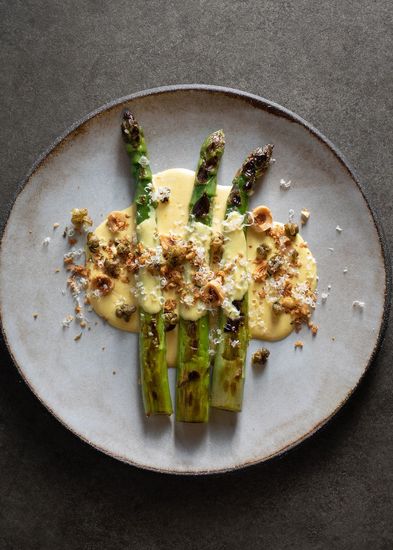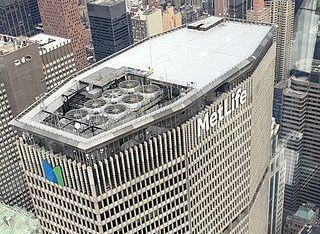St. James’s Church in Lower Manhattan
By Denis P. McGowan
On May 4, 2018, the Ancient Order of Hibernians celebrated 182 years of their pride in their Irish heritage, Catholic faith, and a long record of fraternalism in the United States of America.
The AOH traces its origins back to the year 1565 in Ireland, when Irish Catholic men first banded together as the Defenders by Rory Oge O’More in the County Kildare, Province of Leinster.
In 1565, the Earl of Sussex issued a proclamation establishing a penalty of death for any priest found in the Province of Leinster. The head of a priest brought a higher reward than the head of a wolf.
Rory Oge O’More organized the Defenders to serve as sentinels, guarding both clergy and the congregation during the celebration of the Mass and the ministering of the sacraments, and helping them to safeguard the Mass in the woods, hills and glens.
The Sogarth Aroon (Irish for “Dear Priest”) would celebrate Mass using a large rock for the altar. The Defenders would also secure a place of sanctuary for the hunted priest, in the caves of mountains, or a small cabin of the faithful, who risked all to shelter the shepherd of their flock.
In those dark and dreary days, under the very oppressive and stringent English Penal Laws, it was illegal for Irish Catholics to attend Mass, to practice their faith, to speak their native Gaelic language, to hold a life annuity, to own land, to hold public office, to purchase land, to receive an education, to vote, to keep any arms for protection, and mandated Catholics to attend of Protestant worship services, along with a host of other offensive laws imposed upon the Irish people by the English.
Violations of the Penal Laws were punishable by torture, exile, imprisonment or death.
Secret agrarian societies, such as the Defenders, the Terry-Alts, the White Boys, the Rapparees and the Ribbonmen, were formed in Ireland down through the centuries to right injustices, protect the Roman Catholic clergy, and to guard the celebration of Mass and the illegal “hedge schools” which taught Gaelic, Latin, Greek, Irish history and the Catholic faith to eager Catholic youths.
They often avenged displaced Catholic farmers and their families who had been cruelly dispossessed of their homes and native land by English landlords. They usually struck at midnight, burning the offending landlord’s property and home in retribution for evictions.
It was from these early secret societies that the Ancient Order of Hibernians traces its origins in Ireland, according to Brother John O’Dea’s three-volume work, “The History of the Ancient Order of Hibernians and Ladies Auxiliary” (1923).
One of the largest Irish Catholic secret societies was called the Ribbonmen.
The Ribbonmen took their name from their badge of recognition, pieces of green cloth worn in a coat’s buttonhole. Brother John T. Ridge, in his excellent work “Erin’s Sons in America: The Ancient Order of Hibernians,” written during the AOH’s 150th Anniversary in 1986, writes how branches of the Ribbonmen were organized in nearly every Irish Catholic community, and were coordinated by an “Emerald Board,” the governing body of the Ribbonmen societies existing in Ireland, Scotland and England in the 1830s.
Brother Ridge describes how the Ribbonmen operated throughout Ireland in total secrecy, and branches were confined to a specific locality within a county for fear of detection by the English.
The Ribbonmen used secret hand signals, passwords, and handshakes to conceal the identity of their members, maintain the secrecy of their organization, and to protect themselves from the English oppressors.
The Ribbonmen continued the Defenders’ traditions by protecting the Catholic clergy and defending the downtrodden Irish Catholic people from the attacks, house burnings and murders committed by Protestant secret societies such as the “Peep O’Day Boys, “Oak Boys,”” and the “Hearts of Steel.”
These loyalist organizations would evolve into the Protestant Orange Order in 1795. The Orange Order still exists in Northern Ireland, Scotland, England, Wales, Australia, Canada, and the United States, and holds triumphalist and highly-offensive parades throughout Northern Ireland to commemorate the battle of the Boyne in 1690 of the Protestant King William of Orange over the Catholic King James II.
In the early 1820s, branches of the Ribbonmen adopted public names such the “St. Patrick’s Boys,” “Saint Patrick Funeral Society,” “Sons of the Shamrock,” or the “Hibernian Funeral Society,” this in order to function publicly, to provide death and sick benefits to members and their families in distress, and to operate more on the lines of “friendly societies.”
It was during this period of time that friendly societies became popular in the British Isles, with orders such as the Ancient Order of Foresters, the Order of Odd Fellows and the Free and Accepted Masons being formed in England.
The friendly societies gave birth to the lodge system of organization, using secret ceremonials for initiating new members, secret modes of recognition among the membership, the issuance of charters to the subordinate branches of the orders, a system of government and rules for the conducting of meetings and the business of the order and its branches, as well as providing their members with sick and death benefits.
They often provided free burial services for their departed members, which was an attractive benefit of that time. They also devised regalia for their members to wear, such as collars, sashes, and ribbons bearing the secret symbols and emblems of their society.
In a period when there was no life insurance or social security, the friendly societies provided for their members’ families in the event of grave sickness or serious injury prevented their employment, or if they passed away, the sick and death benefits were the only form of income for families of the friendly societies’ members.
The Ancient Order of Hibernians evolved into a friendly society in Ireland, adopting the title “Hibernians” from “Hibernia,” the ancient Latin name for Ireland. The Ancient Order of Hibernians Board of Erin still refers to itself as a friendly society in its recruitment literature to this day.
The Irish also began to organize mutual aid and benefit societies in America, especially in key cities such as Boston, New York and Philadelphia. The Friendly Sons of Saint Patrick was established in 1784 in New York, and was proud to have General George Washington as a member.
Irish Catholics began to organize to counter the anti-Catholic and anti-Irish prejudice and violence in America. Irish Catholics were being denied jobs with “No Irish Need Apply” signs at places of employment, faced discrimination and harassment, and denied housing with the famous “No Irish or Dogs” signs placed on doors.
Roman Catholics, and the Irish in particular, were targeted with bigotry and hatred. The Irish Catholic was often depicted in newspapers with simian features and portrayed in a very negative and derogatory manner. Nativist prejudice grew from intolerance to violence.
St. Mary’s Roman Catholic Church in New York was burned to the ground in 1831; in 1832, 57 Irish railroad workers near Malvern, Pennsylvania died from Cholera and/or attacks by Nativsts, were refused medical attention, died, and were dumped in an unmarked mass grave; on August 10, 1834, the Ursuline Convent in Massachusetts was burned down by an anti-Catholic mob; and throughout 1834 and 1835, anti-Catholic nativist gangs attacked the Irish neighborhood of Five Points in New York resulting in several major street brawls that lasted for days.
The Irish needed mutual benefit societies, such as the friendly societies, to provide protection of their communities and their houses of worship, as well as to aid their members’ families in need in times of the breadwinner’s sickness and death.
In 1836, a group of members of the order who had immigrated to the United States appealed to the Board of Erin in Ireland for permission to establish a branch of the Ancient Order of Hibernians in New York City.
At the same time, another group of Hibernians in Schuylkill County, Pennsylvania, were also seeking to formally establish a branch in their state. The two groups joined to march in the New York Saint Patrick’s Day parade in 1836.
The Hibernians in New York City met in the parish house at 23 Oliver Street of St. James Roman Catholic Church, located on St. James Place in Manhattan, near the Five Points section. This area is presently known as Chinatown, but was inhabited during this period of time mainly by Irish immigrants.
In June of 1836, these Hibernian brothers received a reply from the Board of Erin. Although the original charter has unfortunately long been lost, the words have been preserved for over 180 years by the officers and historians of the AOH and can be read in John T. Ridge’s “Erin’s Sons in America: The Ancient Order of Hibernians.”










